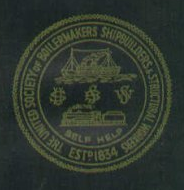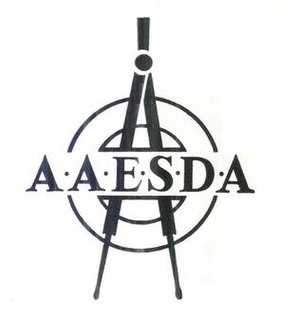A trade union, often simply referred to as a union, is an organization of workers intent on "maintaining or improving the conditions of their employment", such as attaining better wages and benefits, improving working conditions, improving safety standards, establishing complaint procedures, developing rules governing status of employees and protecting the integrity of their trade through the increased bargaining power wielded by solidarity among workers.
In British politics, an affiliated trade union is one that is linked to the Labour Party. The party was created by the trade unions and socialist societies in 1900 as the Labour Representation Committee and the unions have retained close institutional links with it.

The Transport and General Workers' Union was one of the largest general trade unions in the United Kingdom and Ireland – where it was known as the Amalgamated Transport and General Workers' Union (ATGWU) to differentiate itself from the Irish Transport and General Workers' Union – with 900,000 members. It was founded in 1922 and Ernest Bevin served as its first general secretary.

The Workers' Socialist Federation was a socialist political party in the United Kingdom, led by Sylvia Pankhurst. Under many different names, it gradually broadened its politics from a focus on women's suffrage to eventually become a left communist grouping.

The General Federation of Trade Unions (GFTU) is a national trade union centre in the United Kingdom. It has 35 affiliates with a membership of just over 214,000 and describes itself as the "federation for specialist unions".

The Amalgamated Engineering Union (AEU) was a major British trade union. It merged with the Electrical, Electronic, Telecommunications and Plumbing Union to form the Amalgamated Engineering and Electrical Union in 1992.

The United Association of Journeymen and Apprentices of the Plumbing and Pipe Fitting Industry of the United States and Canada, commonly known as the United Association (UA), is a labor union which represents workers in the plumbing and pipefitting industries in the United States and Canada.
The Northern Carpet Trades Union (NCTU) was a trade union in the United Kingdom. It was first formed in 1892 in Halifax, West Yorkshire, later expanding to cover all of Northern England. The NCTU was formed later than the Power Loom Carpet Weavers' and Textile Workers' Association, based in Kidderminster, and was considerably smaller. Approximately a fifth of eligible workers were members of the NCTU in 1939, compared to 50 percent for the Kidderminster union. Attempts to amalgamate all unions in the carpet trade failed, but in 1917 the National Affiliation of Carpet Trade Unions was established with equal representation from the NCTU, Scottish Carpet Workers' Union, National Union of Dyers, Bleachers and Textile Workers and Power Loom Carpet Weavers' and Textile Workers' Union.

The Amalgamated Society of Boilermakers, Shipwrights, Blacksmiths and Structural Workers (ASB) was a trade union in the United Kingdom. Many of its members worked in shipbuilding, in which industry it was the leading trade union, while over time it also developed strength in engineering and construction.

The Irish Trades Union Congress (ITUC) was a union federation covering the island of Ireland.
The Amalgamated Society of Engineers (ASE) was a major British trade union, representing factory workers and mechanics.

The Association of Draughting Supervisory and Technical Employees (ADSTE), originally known as the Association of Architects, Engineers, Surveyors and Draughtsmen of Australia (AAESDA), was an Australian trade union which existed between 1915 and 1991. It represented white collar and technical-grade employees in both the private sector and the public service.
The Federated Moulders' (Metals) Union of Australia (FMMUA) was an Australian trade union which existed between 1899 and 1983. It represented moulders – skilled tradesmen who fabricated the moulds for casting metal products in foundries. In spite of only organising within a single skilled occupation, which kept total membership low, the vital position of moulders in major industries such as mining, manufacturing and the railways, ensured that the union remained industrially powerful with a reputation for being highly militant.
The labour movement or labor movement consists of two main wings: the trade union movement or labor union movement on the one hand, and the political labour movement on the other.

Thomas Mallalieu was a British trade unionist.
The General Council of the Trades Union Congress is an elected body which is responsible for carrying out the policies agreed at the annual British Trade Union Congresses (TUC).
The history of trade unions in the United Kingdom covers British trade union organisation, activity, ideas, politics, and impact, from the early 19th century to the present.
The International Association of Sheet Metal, Air, Rail, and Transportation Workers (SMART) is a North American labor union headquartered in Washington, D. C., was chartered by the AFL–CIO in 2013. The product of a merger between the Sheet Metal Workers’ International Association (SMWIA) and the United Transportation Union (UTU), SMART represents over 210,000 sheet metal workers, service technicians, bus operators, engineers, conductors, sign workers, welders, and production employees, among others, throughout the United States, Puerto Rico, and Canada. The Transportation Division represents employees on Class I railroad, Amtrak, and regional and short line railroads; bus and mass transit employees on some 45 transit systems; and airline pilots, flight attendants, dispatchers and other airport personnel. The Division's 500 local unions organize conductors, brakemen, switch men, ground service personnel, locomotive engineers, hostlers, and railroad yard masters, as well as bus drivers and mechanics.
The Journeymen Steam Engine, Machine Makers' and Millwrights' Friendly Society, also known as the Old Mechanics, was an early trade union representing engineers in the United Kingdom.
Fred Worthington was a British trade union leader.









